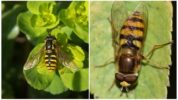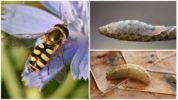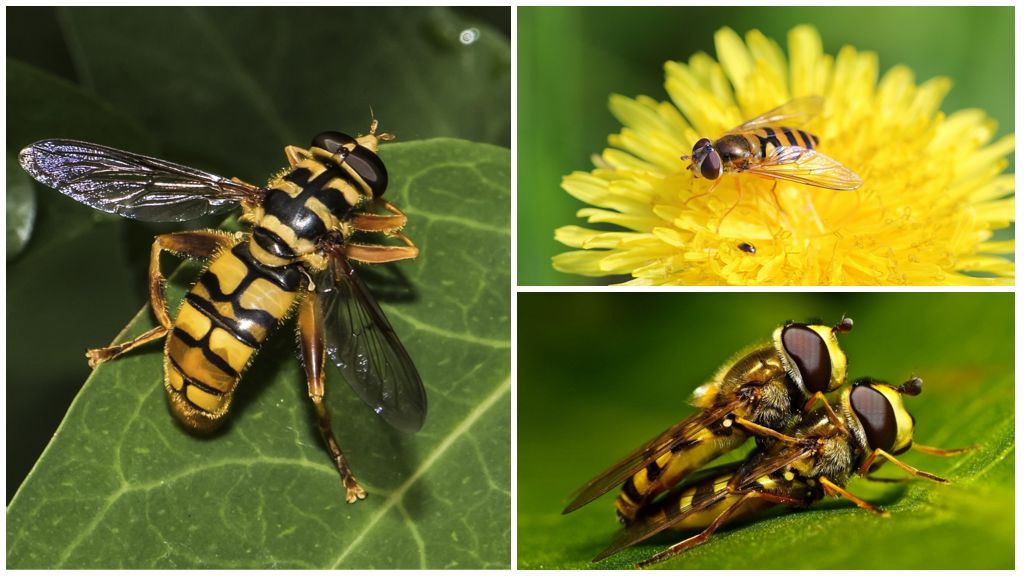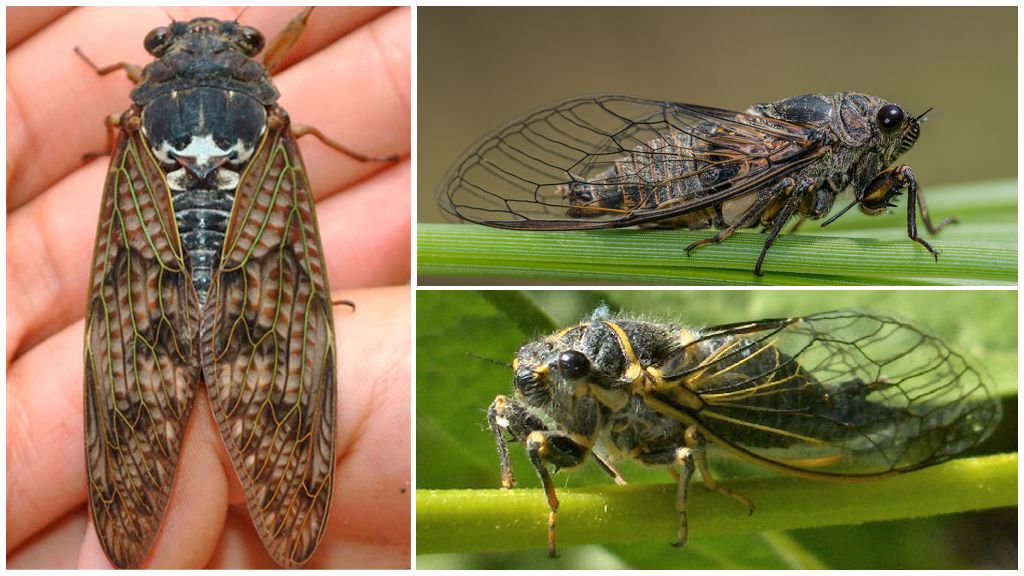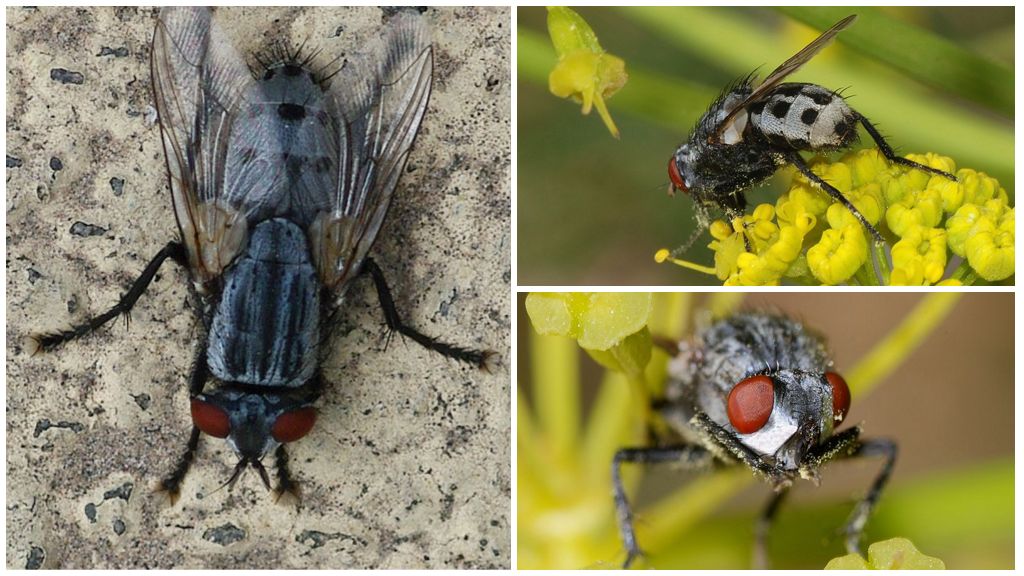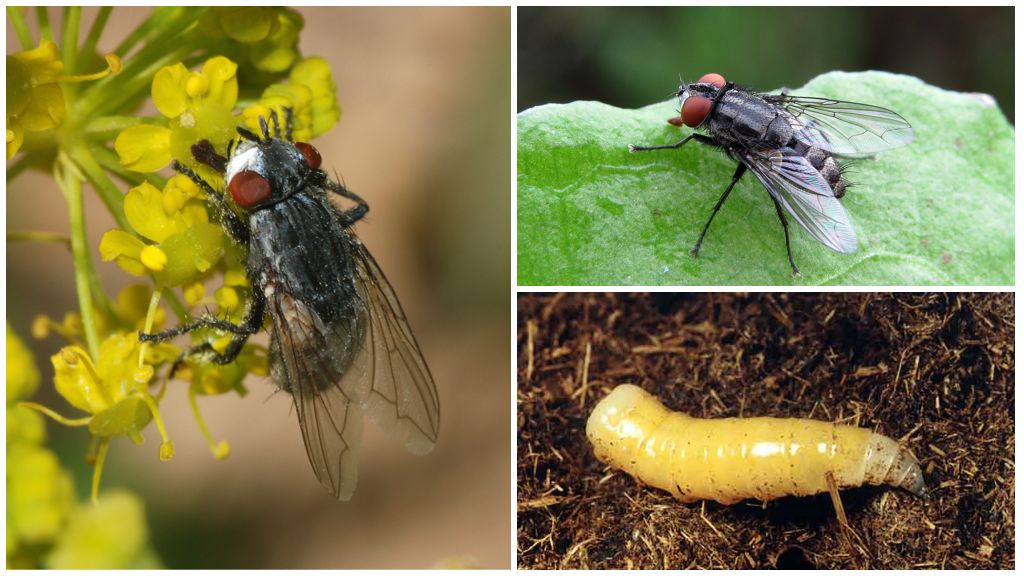- Fly bug
- Ghostfly larvae
A fly that looks like a wasp is familiar to many gardeners. However, the insect does not behave at all like a wasp, but in a completely different way: the difference can be noticed when a creature frightened by the proximity of a person soars up. The Creeper does not immediately leave the danger zone. For some time, it hangs in place, making a peculiar sound with its wings, reminiscent of the murmur of water. Apparently, this fact influenced the name of the fly.
What does it look like
Gourds, they are sirfids - a large family of about 6,000 species. Externally, the striped fly from the Syrphidae family really resembles a formidable wasp, bee or even a bumblebee. This feature (mimicry) allows the insect to defend itself against a bird that wants to feast on it. After all, the birds try not to contact the wasps, fearing their sting and poison.
The body size of an adult fly is 10-12 mm; there are also large specimens body size up to 25 mm. The main sign of the difference between insects of this species is the absence of hard hairs, the owners of which are representatives of other fly families. Like bumblebee the striped dark yellow color of the body of the fly is covered with a small pile. But unlike these insects, the beetles lack a second pair of wings, which gives them the opportunity to hang for a long time in flight and dramatically change their direction of movement. Zhurchalka is the owner of light short legs and a moderate proboscis length (a photo of a fly similar to a wasp is presented below).

Where dwells
A female fly is found almost everywhere, with the exception of Antarctica, deserts and tundra. Especially common are insects of this species in Europe, Central Asia and North America.
On a note!
There is also a striped fly in Russia, inhabiting personal plots.
What eats
Adults feed pollen and nectar of plants. Most often, a fly as a wasp is found on flowering plants, planting parsley, dill, carrots. She does not disdain a variety of meadow herbs, fruit trees and shrubs. After all, the basis of insect nutrition is sugar contained in nectar. It is he who replenishes the energy reserves of a flying insect. Pollen is a source of protein, which is necessary for the proper growth and development of eggs.
How to breed
Years of flies begins in late May, early June. Mating season germs usually fall in July. One female lays up to two hundred eggs. She can place them in the grass, on the stems of plants, tree branches and on the surface of the soil (the place of oviposition usually depends on the type of insect). So, an onion grub, which lives mainly on onions, lays eggs on the feathers of a crop.
On the egg development It usually takes 8-12 days. The legless inactive larvae that emerged from them resemble a flexible leech of a green, pale yellow or pinkish hue. Through a thin peel, internal organs are visible. The length of the sirphide at this stage of development is about one centimeter.
By the type of food, the larvae can vary:
- predators use aphids, fleas, and other small insects as food, helping gardeners fight small pests;
- herbivorous species damage the liliaceae bulbs and plant stems;
- the larvae that live in the pond use detritus for food;
- the manure and wood of dead trees serves as a food source for exotic female flies.
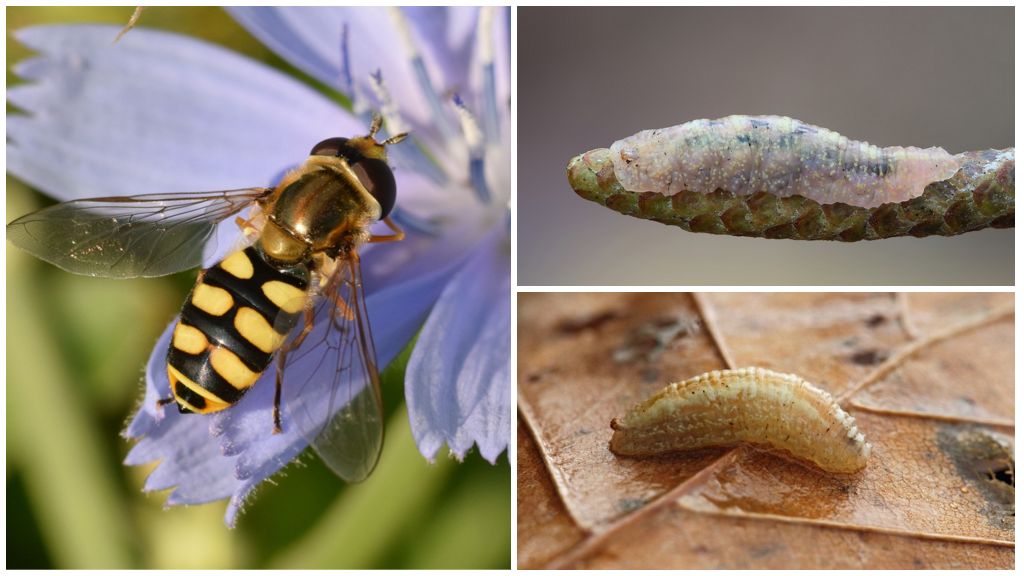
So the larvae feed and grow for 2-3 weeks, after which they move to the next stage of their development - to the pupal stage.
The chrysalis pupa has a droplet-shaped body. Pupae that remain to winter usually brown color, light shade - summer pupae. After 10-14 days, an adult appears from the puparium, which after 1-2 hours becomes capable of flying. With the onset of cold weather, caterpillars of a new generation are hiding for wintering.
About the dangers and benefits
Not everyone knows that a female fly is not able to bite, since it does not have a sting or poison. Speaking of the dangers and benefits of these “false” wasps, it all depends on their type.
On a note!
Huge larvae of predatory species of beetles benefit. They are the best protectors of fruit trees and shrubs, destroying various harmful insects. The larvae of the beetles are also pollinators of flowering crops, which is especially necessary in mountainous areas due to a lack of bees.
The exact opposite can be said of herbivorous gulls. Such flies are a source of great problems for owners of garden plots, damaging onions, garlic, bulbs of hyacinths, daffodils, gladioli and tulips. As a result, damaged plants begin to hurt and dry out. Bulbs of flower crops suffer no less, without giving themselves good reproduction.
